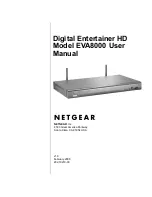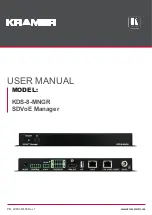
_____________________________________________________________________
724-746-5500 | b lackb o x.co m
Page 135
capabilities. A complete overview, FAQ, and comprehensive documentation are available at:
http://www.nagios.org
Nagios does take some time to install and configure, however once Nagios is up and running however, it
provides an outstanding network monitoring system.
With Nagios you can:
Display tables showing the status of each monitored server and network service in real time.
Use a wide range of freely available plug-ins to make detailed checks of specific services—for
example, don't just check that a database is accepting network connections, check that it can
actually validate requests and return real data.
Display warnings and send warning e-mails, pager, or SMS alerts when a service failure or
degradation is detected.
Assign contact groups who are responsible for specific services in specific time frames.
10.2 Central management and setting up SDT for Nagios
The Black Box Nagios solution has three parts: the Central Nagios server, Distributed Black Box
console
server
s, and the SDT for Nagios software.
Central Nagios server
A vanilla Nagios 2.x or 3.x installation (typically on a Linux server) generally running on a blade, PC,
virtual machine, etc. at a central location.
Runs a web server that displays the Nagios GUI.
Imports configuration from distributed
console servers
using the SDT for Nagios Configuration
Wizard.
Distributed
console server
s
Black Box
console servers
.
Serial and network hosts are attached to each
console server.
Each runs Nagios plug-ins, NRPE, and NSCA add-ons, but not a full Nagios server.
Central Nagios server
Distributed console
servers
















































